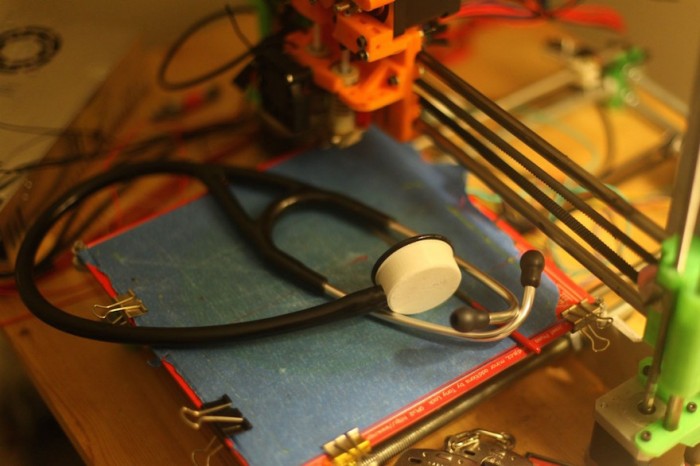
As the conflict between Palestine and Israel continues, accessibility to the area has become increasingly poor and residents are having to find new, resourceful ways of providing their own power, water and medical care. Now a doctor based in Gaza has developed a 3D-printed stethoscope that only costs 30 cents to build, making it vastly cheaper than its traditional market counterparts (which are priced around $200).
Dr Tarek Loubani works as an emergency doctor at the Shifa hospital in Gaza. He started the Glia project, which aims to bring low cost medical devices to Gaza, a few years ago when he and his colleagues had to resort to listening for heartbeats with their heads pressed to patients’ chests. His designs, which include an ear-inspecting otoscope and a heartbeat-monitoring stethoscope, are open source and available online. The plan, says Loubani, is not to be a device manufacturer, but to have Gazans build the tools themselves.
Loubani has worked with designers and engineers and his stethoscopes have been prototyped and tested over the last six months, and prove to be as good as the gold standard model, the Littman Cardiology III by 3M. According to Loubani, the cost of the 3D printer alone is around the same as purchasing a new Littman stethoscope.
Loubani is also created a crowdfunding project to provide solar power to hospitals in Gaza. The campaign, EmpowerGAZA, recently reached its $200 000 target on crowdfunding platform Indiegogo and will help the hospitals in the Palestinian territory succeed in caring for their patients, despite constant power cuts. EmpowerGAZA plans to provide solar for Gaza’s four biggest hospitals, which care for more than the 1.8 million residents, and help make these institutions self-reliant and open around the clock for emergencies.
3D printing technology is being used in interesting ways in many medical fields: from personalised joint replacements, to replacing organs with 3D bioprinting.






